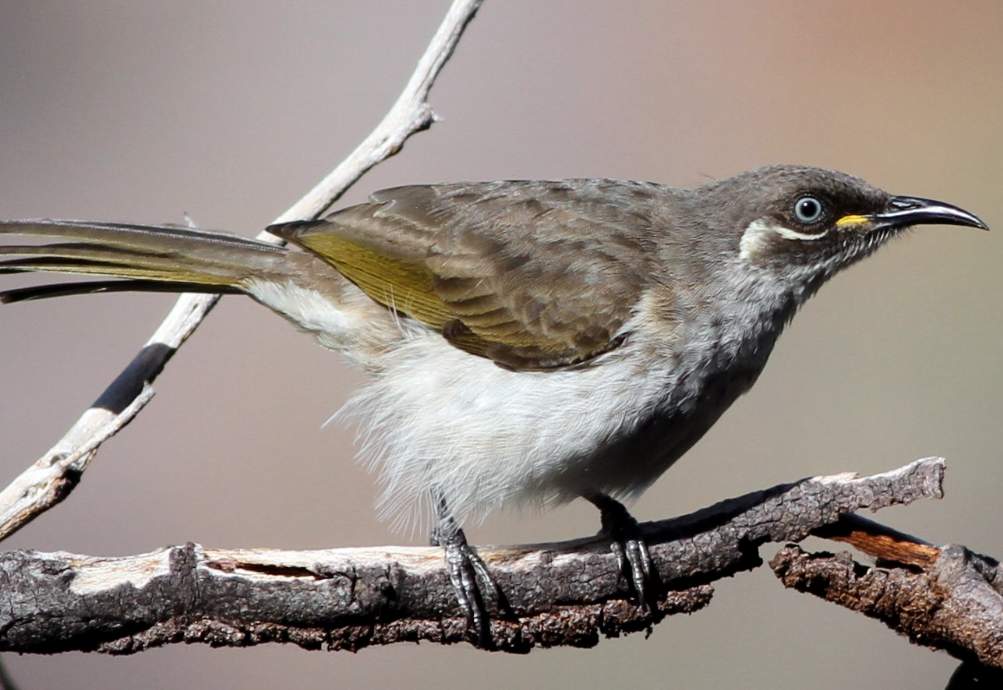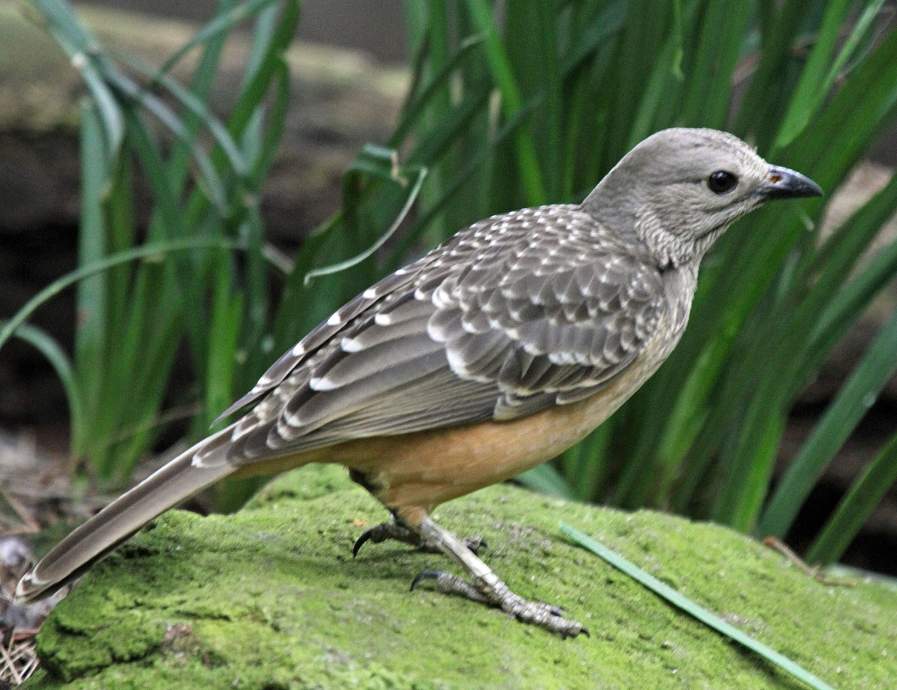Habitat: White-lined honeyeater (Territornis albilineata) chasms and ravines filled with broad-leaved scrub and pockets of monsoon vine forest among sandstone escarpments are the habitats in remote parts of Arnhem Land and the Kimberleys.
The local populations appear sedentary, rarely wandering far after breeding. Also, the established pairs are permanently territorial, judged by year-round singing, and both members feed the young. Territorial songs are given at all times of the day, from sheltered perches in the canopy of trees and shrubs. The songs given by the two isolated races, one in Arnhem Land and the other in the Kimberleys, are quite different. Arnhem Land birds utter three or four long-drawn rising-and-falling whistles; those in the Kimberleys fire out 10–12 quick chirruping whistles at the same time.
Feeding: White-lined honeyeaters feed usually in ones and twos. It is an aggressive forager, chasing smaller birds. It otherwise stays within the crowns of trees and shrubs as it hops about, gleaning fruit and a range of insects—termites, bees, beetles, flies, wasps, weevils, grasshoppers, and spiders.
Groups of up to a dozen or so congregate, according to circumstance, to drink and bathe in rock pools during mid-afternoon and even flutter through waterfall spray. At other times, they gather with other honeyeaters in flowering food trees—Melaleuca, Allosyncarpia, Agonis, and Xanthostemon—to collect nectar. The White-lined Honeyeater spends much of the day foraging for insects, fruits, and seeds.
Alternative Name: It is also known as the White-striped Honeyeater.
Size: White-lined honeyeaters measure 180–200 mm long.
Identification: Both sexes are similar; however, the male is larger. The upper parts, wings, and tail are uniformly deep brownish gray. The flight and tail feathers are with or without a citrine wash, according to race. The lores area through the eye, malar line, and cheeks are dusky gray, split by a narrow white line from the bill under the eye. The ear coverts have a small flared patch of white. The underparts are grayish white, heavily mottled gray-brown over the throat and breast. Eyes are blue-grey. The bill is black; the gape is pale yellow. The feet are leaden. The immature bird (as an adult) is plain olive-grey brown above and plain grey-white below; the wing coverts are tinged rufous, with a flared yellow patch over the ears in an otherwise unadorned face.
Vocalizations: The call and song are ringing whistles in the territorial advertisement: in Arnhem Land, three to five long-drawn clear rising-and-falling whistles, tuuheeer-tuuu-tuuu-uu-eeee; in Kimberley, up to 12 up- and down-slurred chirruping whistles in quick-fire bursts.
Nesting: Nesting and breeding occur in August–January. Nests in a deep cup, about 60 x 60 mm, of fine dry stems, bound with cobwebs, lined with fine stems and fiber, suspended at the rim by cobwebs attached to a low fork in shrubbery 1-3 meters above rock.
Eggs: A white-lined honeyeater lays two eggs: pale salmon with a wreath of dark salmon and red dots at the large end; oval, about 21 x 15 mm.
Distribution: White-lined honeyeater found in shrubberies and pockets of vine forest in ravines and in tumbled sandstone escarpments in western Arnhem Land, between Wellington Range and Katherine Gorge, NT, and in northwestern Kimberleys, WA.
Races: There are two races.
Read More: White-eared honeyeater (Nesoptilotis leucotis)







